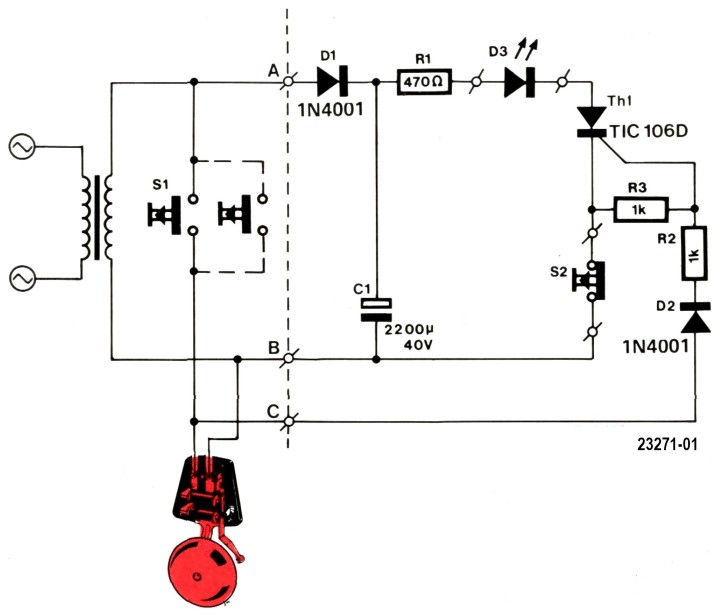Small Circuits Revival (46): Doorbell Memory
on
Doorbell Memory
Idea: Elektor Labs
There are situations that you might like to know if someone has been at your door (and rang the doorbell) during your absence. With, say, nine parts that you probably have lying around somewhere, you can build an effective doorbell memory system and the problem is solved!
This small circuit illuminates an LED as soon as someone rings the doorbell. The LED will remain lit so that when you return home you can immediately see that someone has been at the door.
Take a look at Figure 1. Everything to the left of the dashed line is the normal bell installation with doorbell transformer, one or more bell buttons and of course the bell itself (or a gong or buzzer — that doesn't matter).

The circuit on the right of the dashed line is its new memory. Diode D1 serves as a halve-wave rectifier; capacitor C1 is charged with a DC voltage via this diode. As soon as the call button is pressed, the transformer’s alternating voltage becomes available on point C. The positive half of this AC voltage goes through diode D2 to voltage divider R2/R3. This produces a positive voltage on the gate of thyristor Th1, causing it to conduct.
A current will now flow from the positive side of C1, through current limiting resistor R1, LED D3 (which now lights up) and the normally-closed push button S2 to the negative side of C1. Because C1 is continuously recharged via D1, the current also flows through the LED and the thyristor during the negative halves of the AC voltage. Therefore, Th1 keeps conducting and the LED lights up continuously — until, after you return home, you briefly break the circuit by pressing S2 making the thyristor (and thus the LED) to switch off!


Discussion (0 comments)